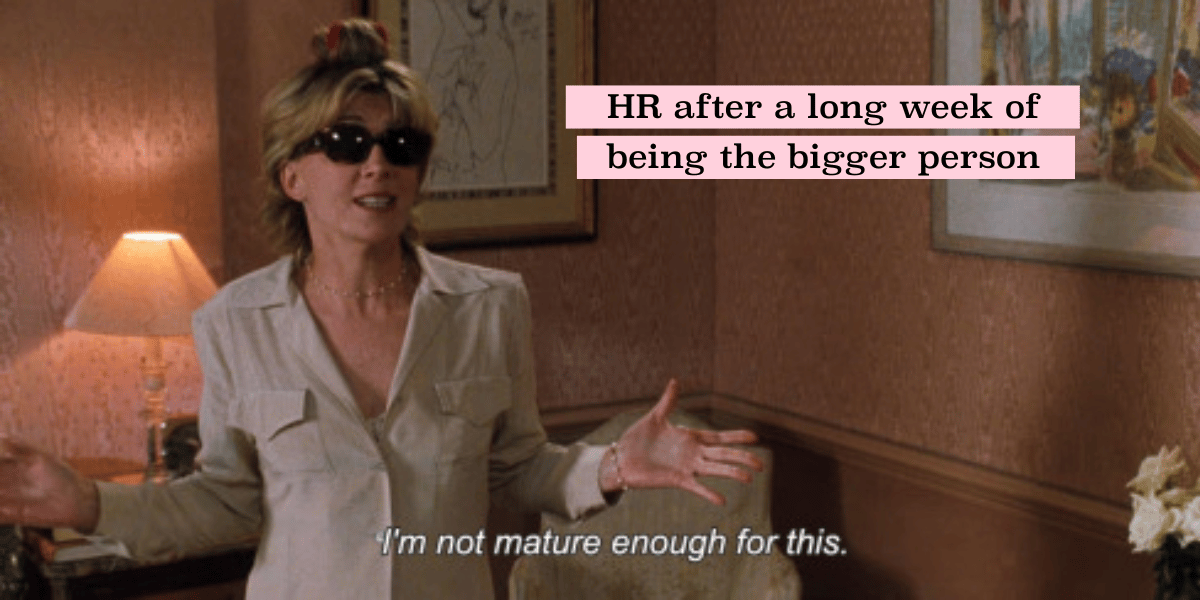- Collide - Generational Leadership
- Posts
- Great Leaders Listen Before the Streets Fill with Signs
Great Leaders Listen Before the Streets Fill with Signs
From Boomers to Gen Z, how generational dissent can guide better leadership decisions.

Last week, I found myself on stage at a national conference with the theme “Think Small. Inspire Big.” The idea was simple but profound: little actions can spark massive impact. And never has that been more evident than in the movements we’re watching unfold across the country.
One of my fellow keynoters at this conference was the former police chief of Ferguson, Missouri. The city that became a flashpoint for racial justice protests, and dare I say riots, just a decade ago. Hearing him recount the unfolding of events—not just the headlines, but the heartbreak—was sobering. Not because the stories were new, but because they were still relevant.
And as I stood there, reflecting on how a single moment can ripple through cities, policies, and generations, headlines started breaking. Again.
This time, it was No Kings Day. And it wasn’t fringe. It was national.
Now, this is not a political commentary (and I will say that a few times). Instead, there are some key leadership lessons for all leaders that can be learned from protests, riots, and even appropriate and constructive dissent.

The Sound of Small Crowds with Big Convictions
On June 14, 2025, between 4 and 6 million Americans marched in over 2,100 cities (Bhatnagar, 2025) in the “No Kings” Protests across the United States. To put that in perspective, that’s about 1 in every 35 U.S. residents. And here’s the thing: you don’t need a majority to change the future. Researchers have long suggested that once just 3.5% of a population mobilizes, real change becomes almost inevitable (Chenoweth & Stephan, 2011). Think about that again, if you’re leading a team or an organization, research suggests that a mere 3.5% of the population can catalyze change.
That number matters. Because the message behind No Kings Day wasn’t just about policy, it was about perception. A growing unease about authority, control, and who holds the reins. But this article isn’t about politics. It’s about people and what they do when they don’t feel heard. More importantly, this article is about leaders and how leaders can respond in their own companies, schools, churches, organizations, and communities.
That matters whether you're leading a country, a company, a school, or a congregation.
When people feel ignored, they show up with signs.
When Boomers March Beside Zoomers
What made Saturday’s protest different wasn’t just its size. It was who showed up.
Photos revealed something you don’t often see: nearly every adult generation was represented. There were Gen Z activists in TikTok tees, yes—but also Millennials pushing strollers, Gen Xers holding coffee in one hand and cardboard in the other, Boomers with orthopedic sneakers and “No Crown, No Kings” signs, and even Silent Generation retirees seated quietly in folding chairs, bearing witness (Renn, 2025).
In fact, an interview I conducted personally with an attendee of one of the larger national demonstrations revealed more about the unexpected demographics that turned out to protest. She recounted that she “blended right in,” referring to her age as a mid-60-something, along with many other Boomers taking to the streets. Furthermore, she mentioned many other marches and protests she had been a part of since her youth, noting that this particular experience had a trend of older participants.
There was even financial backing from unexpected places: Walmart heiress and Baby Boomer, Christy Walton, now 76, funded full-page national ads encouraging participation (Smith, 2025). This wasn’t just young people airing grievances. This was generational convergence.
And that brings me to the most fascinating part: sometimes generations swing against each other like a pendulum. This is what a bulk of my research is on. One rebels against the excesses of the last. One marches left when the previous marched right. But sometimes, when the issue hits something deeper, something human, the generations collide in unison.
This was one of those moments.
The baton, as it so often does, didn’t just pass from old to young. This time, it came full circle. And as leaders, that tells us something critical: This wasn’t protest-as-trend. This was a cohort of Americans, living in the same time and place, unifying against a certain idea.
Again, this is not political commentary, but more a wake-up call for leaders everywhere. There is a deep lesson in this uniting that we must learn.
Why People Protest: The Throughline of Human Nature and What it Means for Leaders
Every generation has a spark that ignites it.
In the 1960s, Silent Generation and early Boomers filled lunch counters and marched against Vietnam. In the 1990s, Gen X organized global disruptions like the WTO protests in Seattle. In the 2010s, Millennials occupied Wall Street, shifting the conversation from capitalism to class. In 2020, Gen Z led one of the largest racial justice movements in history, with 15 to 26 million participants (Buchanan, Bui, & Patel, 2020). And that is to name only a few.
Even today’s Gen Alpha—kids barely out of elementary school—are walking out over climate policies. Every time, the script is slightly different. But the emotion behind it? Always the same.
People protest when they feel voiceless, when systems feel closed, corrupt, or indifferent. When words no longer work.
Protest isn’t always rebellion for rebellion’s sake. It’s the human heart saying: “You didn’t hear me before. So now I’m showing up in a way you can’t ignore.”
Whether a parent or a leader, let me reiterate that last line again: “Protest isn’t always rebellion for rebellion’s sake. It’s the human heart saying: ‘You didn’t hear me before. So now I’m showing up in a way you can’t ignore.’”
Sound like teenage rebellion? Pretty similar.
And as leaders, the mistake isn’t disagreeing with the protest or getting defensive.
The mistake is dismissing the why. Why are people protesting?
And this does not have to be political policy, this can be within your own organization. People are protesting the new vision and mission statement; people protest your new brand; they protest your leader; the bash your new hire; they don’t adapt the new technology you’re integrating; you don’t pay enough…the list goes on.

So, What’s a Leader Supposed to Do?
You don’t have to be a governor or CEO to feel the tension of dissent.
You might be leading a nonprofit board. A startup team. A classroom. A church small group. And yet the symptoms show up all the same:
A small but vocal group begins to question decisions.
Someone posts publicly what they were afraid to say privately.
Good people leave quietly. Or worse—loudly.
The signals are subtle at first. But they’re always there. The question is: Are we (as leaders) listening?
Here’s what I’ve seen, and what I’ve learned in leading and managing teams across the generational divide. Here are three specific sentiments often conveyed, along with their translations and the actions we should take as leaders. By no means is this an inclusive list, but a timely list based on recent events.
“We’re being ignored.”
Translation: There’s a communication breakdown, not necessarily disloyalty.
A Leader’s Move: Stop relying on annual surveys or once-a-year town halls. Run small, frequent listening posts. Treat feedback as an ongoing practice, not a quarterly task. Organizations and leaders that rely on point-in-time feedback are limiting the ability for real-time understanding of how healthy their organization is. Often, Boomers and occasionally Gen X fall victim to checking the box on these types of surveys, while Millennials and Gen Z crave a more real-time, stream-of-consciousness conversation. Facilitating ways within your organization to better listen in real-time can help prevent some of the dissatisfaction felt.“The system feels rigged.”
Translation: Fairness matters more than flashy perks.
A Leader’s Move: We live in a justice-oriented day and age—many have strong convictions of right or wrong. We are polarized as a society. Often, the conversation of “rigged” systems comes from a lack of transparency or understanding why things are the way they are. Younger generations, especially Millennials, love structure. They love to know that 1 + 1 will always equal 2. Gen Z loves authenticity and truth. They are truth seekers. A risk with Gen X leaders is they are often ready to put their heads down and get stuff done, for the betterment of their organization or company, even if it may not always be “clean and tidy.” Boomers share a similar, high-growth mindset and do whatever it takes. However, these often conflict with the younger generation’s desire to question everything and wonder why things are done in a certain way. Creating clear boundaries and protocols is a win-win across the board. Especially in an increasingly litigious world, clarity matters.“We want meaning more than money.”
Translation: Work needs to matter.
A Leader’s Move: Don’t just hang mission statements on the wall. Tie everyday roles to outcomes that make a difference, and share those stories often. This is especially true for Millennials and Gen Z. They want to know that their work is serving a greater good and a larger purpose. Study after study shows that purpose in work is crucial for these younger generations. That is why they will often shirk off what seem to be menial or useless tasks because they don’t see their greater impact. This frustrates more mature generations who have a “do everything all the way” mentality, even if that means engaging in frivolous work.
Listening isn’t weakness. It’s wisdom.
And ignoring those early signs? That’s when the signs come out and the streets fill up.
We often mistake silence for satisfaction. But sometimes silence is just the calm before the storm.
Protests aren’t the problem. They’re the pressure valve on a system that’s overdue for change. Wise leaders don’t bolt it shut. They open it early—and listen.
Final Word
Every generation protests.
In fact, every person protests in their own way. Remeber being 17?
Some do it with signs. Some with sit-ins. Some with storylines and social media. Some will quiet-quit, others will ghost you. But the impulse is timeless: We want to be heard.
Individuals want to know that their perspective, their ideas, and their voice are all being heard.
If you're leading anything in 2025—a classroom, a company, a congregation—your job isn’t to prevent protest.
It’s to create a culture where you understand the driving forces behind your team and you proactively work to lead well and inspire positive change.
Thank you for reading!
Until next time,

Thanks to our sponsors!
HR is lonely. It doesn’t have to be.
The best HR advice comes from those in the trenches. That’s what this is: real-world HR insights delivered in a newsletter from Hebba Youssef, a Chief People Officer who’s been there. Practical, real strategies with a dash of humor. Because HR shouldn’t be thankless—and you shouldn’t be alone in it.


Reply